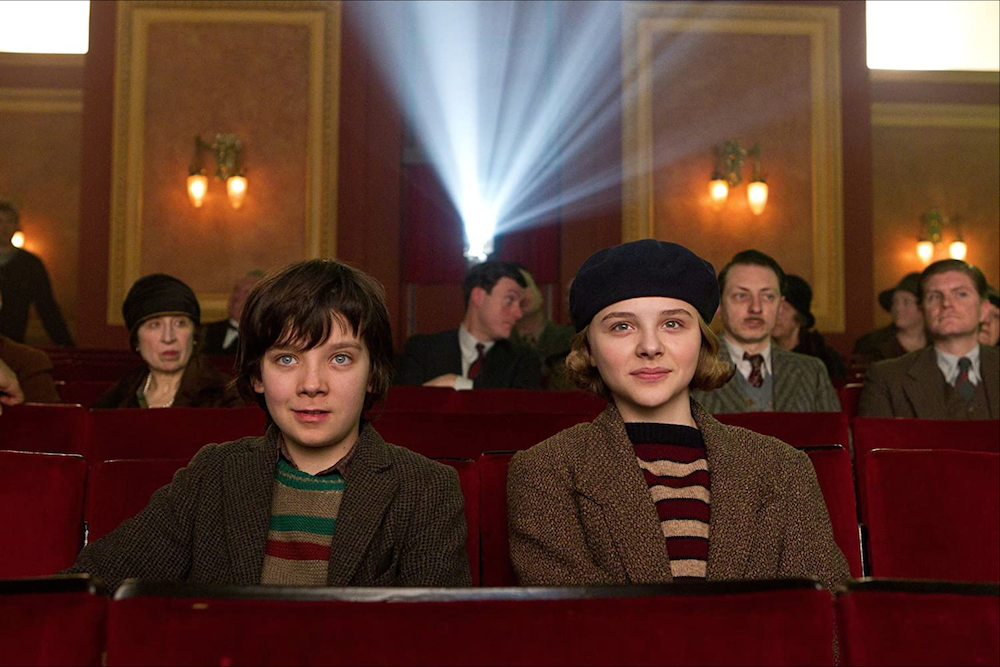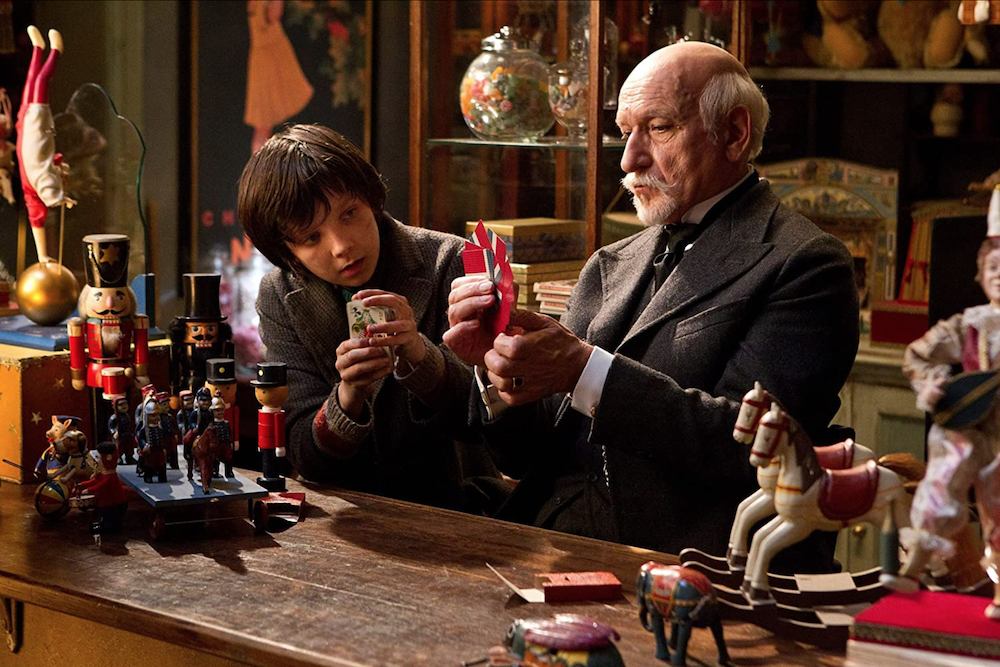Whether you’re fortunate enough to still be in touch with your sense of wonder or
have lost it and thought it never to be regained, I beseech you: See Hugo.

Directed by Martin Scorsese from John Logan’s screenplay, based on Brian Selznick’s acclaimed book The Invention of Hugo Cabret, Hugo runs 126 minutes. About 120 of those minutes are pure cinematic nirvana. I’m almost mad, yet also strangely relieved, that no matter how many films I see as this stacked season progresses — and no matter that it’s difficult to compare movies of wildly different styles, aims, and approaches — I’ve clearly seen the most fascinating, most captivating movie of the year... unless, almost ironically given their subject matter, The Artist ends up matching it.
I haven’t yet read Selznick’s book, although I plan to do so before I see the movie again. So I can’t say how faithful the film may be; I can only tell you that Scorsese has delivered a masterpiece.

I’m guessing that Hugo was not given the book’s full title — or even called simply
Hugo Cabret in the US, as the French release is — to make it more accessible as “a children’s movie”. The problem there is that it’s no such thing. It’s a movie for just about anybody who isn’t irredeemably dead inside — except perhaps for much of today’s youth, due to its period setting, muted tones, and deliberate pace. The poster of young Hugo dangling from a clock tower feels misleading. Hugo is hardly bereft of suspense or physical adventure, but it remains a story set in the 1930s of an orphaned boy (played by Asa Butterfield) with a gift for fixing mechanical objects who lives in a Paris train station, of his book-loving friend Isabelle (Chloë Grace Moretz), of her stern guardian (Ben Kingsley), and of the potentially disquieting automaton that through chance unites them, built by a moving-picture pioneer now forgotten to the general public.
From reviews I’ve read and conversations I’ve had, I gather that Hugo started a bit
too slowly for some viewers and/or went on a bit too long. While I can’t agree on either score, given how quickly and completely I was caught up in the film, there are a few passages that I could have done without — not for time per se but for content. The scenes focused on the bumbling station inspector (Sacha Baron Cohen) broke Hugo’s hypnotic hold on me every time; I appreciate the color that he and other regulars in the station’s bustling ecosystem provided both literally and figuratively, as well as his importance to the plot, yet the character grated.
What I liked most about the inspector was the splash of cerulean that his uniform brought to the film’s rich browns and golds, set off most often by judicious blues but also the occasional well-placed crimson. The predominantly amber setting of most of the film’s action — lush, never drab, despite its limited palette — was broken most starkly by the wares of the station concourse’s florist (Emily Mortimer), those of its venerable bookseller (Christopher Lee), and the fantastical silent films of Georges Méliès excerpted with increasing frequency as Hugo progresses. If Hugo were stripped of its convincing performances and its compelling message of how each of us has a place in the clockwork movings of the universe, it would still be a visual delight.

Perhaps the most remarkable thing about Hugo to me, of many remarkable things,
is that 3D contributes so mightily to its singular experience. I tend to avoid 3D showings of films, even those that were shot specifically for the process rather than converted to 3D after the fact, because at best there isn’t enough value added to justify the upsell; I find the glasses awkward — I’m among those who have to wear them over my own glasses — and the effects are nearly always distracting rather than complementary, with the film usually too dark because somewhere in the chain from distributor to theater the glasses haven’t been compensated for with brighter prints or bulbs, better projectors, or whatever. Last night I placed my faith in Scorsese, plunked down my $15, and plumb loved the result. Colors popped and I was absolutely bewitched, lost in a painstakingly crafted world of enchantment.

“Any sufficiently advanced technology is indistinguishable from magic,” wrote science-fiction grandmaster Arthur C. Clarke.
Years ago I learned some of the very tricks that Hugo shows Georges Méliès employing, once upon a time when film was an actual physical thing that you cut and spliced. But I have no practical idea how the hundreds of people whose names scroll by at the end of a movie create what we see on screen today. I certainly don’t know — nor, for that matter, would I want to, if such knowledge is even attainable — how it’s possible for a roomful of people to sit in the dark and believe that actors familiar from other roles are these and only these characters at this moment, inhabiting a world that only exists through brawn, sweat, illusion, and willful acceptance of unreality.
What I do know? Hugo is magic.
Photos: Jaap Buitendijk © 2011 GK Films.
Related: Great Scott • 42 Favorites: #11 • A Curious Case of
Bedrooms and Buttons • Silent Treatment • Paris Review

I haven't read your full review yet (cuz I haven't seen the film yet, though I plan to), but I just wanted to mention/toot my own horn that I had the occasion to work a Brian Selznick book signing recently, and he is all kinds of cool, and clearly very passionate about his art. The amount of effort that goes into his illustrations is mind boggling.
ReplyDeleteAlso, I learned his love of old timey cinema comes in part from the fact that he's a distant cousin of movie mogul/impressario David O. Selznick, which is all kinds of cool.